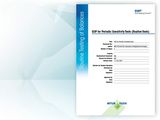|
Conocimientos adicionales recomendadosEl Acelerador Relativista de Iones pesados o RHIC por sus siglas en ingles(Relativistic Heavy Ion Collider) es un colisionador de iones pesados, localizado y operado por el Brookhaven National Laboratory (BNL) en Upton, New York.[2] By using RHIC to collide ions traveling at relativistic speeds, physicists study the primordial form of matter that existed in the universe shortly after the Big Bang,[3] and also the structure of protons. Actualmente, el RHIC es el mas poderoso colisionador de iones pesados en el mundo. It is also distinctive in its capability to collide spin-polarized protons. Referencias
Véase también
Enlaces externos
Categoría: Física nuclear |
| Este articulo se basa en el articulo Relativistic_Heavy_Ion_Collider publicado en la enciclopedia libre de Wikipedia. El contenido está disponible bajo los términos de la Licencia de GNU Free Documentation License. Véase también en Wikipedia para obtener una lista de autores. |


Enciclopedia




